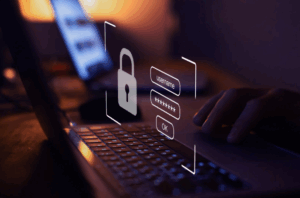
The stage was set, and the insights flowed as Plow Networks brought together a powerhouse panel for its 2nd annual “Cut the $hIT” live podcast event. Bryan Link, Plow Networks’ Chief Operating Officer, led the discussion that centered on the revolutionary Zero Trust Architecture (ZTA). Featuring experts from Fortinet, Clearwater, CRC Group, Jamf, and our very own Itzik Gur from Insentra, the event delved into the principles of ZTA and provided practical guidance on implementation.
Here are the top five takeaways for tech and business leaders:
1. Embracing Zero Trust: A Paradigm Shift
Traditional security models built on the ‘castle and moat’ concept have become obsolete in our dynamic work environment. The pandemic forced us to rethink our approach to security, leading to the emergence of Zero Trust. This paradigm shift challenges the notion of a secure perimeter, urging organizations to abandon the “implicit trust” model and reconsider the “least privileged” approach.
Zero Trust focuses on validating and verifying the identity of users, devices, networks, data, and applications. By enforcing least-privilege access policies, we minimize the potential impact of a security breach. It’s crucial to understand that Zero Trust isn’t a product; it’s a new way of thinking about security, requiring a holistic approach to implementation.
2. Beyond Buzzwords: Zero Trust as a Proactive Framework
Zero Trust transcends mere industry buzz. What sets it apart is its proactive nature, leveraging telemetry data for automated responses. The mantra: authenticate and authorize every device, user, and network flow. By assuming a breach as a foundational principle, Zero Trust enables organizations to stay ahead of potential threats, fostering a level of visibility that empowers IT departments to proactively manage and detect suspicious activities. Remember, it’s not just about securing the perimeter; it’s about securing every interaction.
3. Zero Trust: A Continuous Journey Toward Security Resilience
The journey to Zero Trust is not a one-time event but a continuous evolution. To embark on this transformative path, organizations need to identify critical services and applications, comprehensively understand user interactions with data, and conduct rigorous risk assessments to pinpoint potential security gaps. This isn’t a destination; it’s a commitment to ongoing improvement and adaptability.
4. Education Drives Adoption: Building a Culture of Security Awareness:
The adoption of Zero Trust goes hand in hand with change management and education. As risks extend beyond the workplace, internal education, particularly among the C-suite, becomes pivotal. Building a robust culture of security awareness among employees becomes a frontline defense, ensuring that everyone within the organization is a proactive guardian of sensitive data.
5. Unpacking the Costs: More Than Just Financial
While costs of Zero Trust implementation vary, the silver lining is that many organizations already possess tools aligned with the model. Our panellists underscored the importance of prioritizing solutions that communicate seamlessly over standalone best-in-class options. Integration is the linchpin for an effective Zero Trust implementation. Every organization will go on their Zero Trust journey from a different starting point, so it’s important to recognize the path you want to take and the continuous protection while in hybrid state.
Dive Deeper with the Ultimate Guide to Zero Trust
Ready to embark on your Zero Trust journey? Elevate your understanding with the “Ultimate Guide to Zero Trust,” a comprehensive resource. This guide covers key principles, the importance of Zero Trust in avoiding breaches, cost considerations, and practical steps to kickstart your implementation. Don’t miss out – download the ebook now and fortify your organization’s cybersecurity stance.










